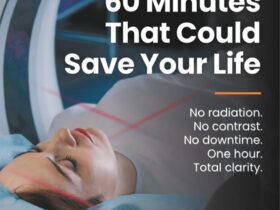Medicare approves ForseeHome, a Home-based Monitoring Program
 Age-related Macular Degeneration (AMD) affects more than 1.75 million individuals in the US, and owing to the rapidly aging of the US population, it is expected that it will reach 3 million by 2020. A diagnosis of AMD causes anxiety because it’s well known that significant vision loss can be a possibility, particularly if there is progression from the “dry” to the “wet” form of the disease. Fortunately, the earlier AMD is treated, the better the patient’s final visual outcome will probably be. However, to have early treatment, true early detection is critical. Successfully recognizing the first signs that could indicate disease progression have been notoriously difficult to achieve…until now.
Age-related Macular Degeneration (AMD) affects more than 1.75 million individuals in the US, and owing to the rapidly aging of the US population, it is expected that it will reach 3 million by 2020. A diagnosis of AMD causes anxiety because it’s well known that significant vision loss can be a possibility, particularly if there is progression from the “dry” to the “wet” form of the disease. Fortunately, the earlier AMD is treated, the better the patient’s final visual outcome will probably be. However, to have early treatment, true early detection is critical. Successfully recognizing the first signs that could indicate disease progression have been notoriously difficult to achieve…until now.
Starting some months ago, Dr. Joshua Mali, a Fellowship Trained Retina Specialist at The Eye Associates, began to study a piece of technology called The ForeseeHome AMD Monitoring Program, which was recently approved by Medicare. It is the first FDA-approved home-based monitoring system designed to monitor dry macular degeneration. Dr. Mali is one of the first doctors in this area to offer the benefits of this system to his patients. Patients use the ForeseeHome device by looking through a foam eye-piece for three minutes each day. From the comfort of their own homes, their results are automatically transferred to a monitoring center which then alerts the doctor to any change from a pre-established baseline. It’s easy to use, since the device simply plugs into a power outlet, making an internet connection or computer unnecessary. Another advantage is that the manufacturer helps patients learn how to use the machine, and assists in their establishing an initial baseline by which subsequent results are measured.
AMD and The Difference between Wet and
Dry AMD
Dr. Mali explains, “As we age, if we smoke or if genetics are not on our side, we may come down with age-related macular degeneration, which is the leading cause of severe vision loss and blindness in adults over age 50.“ The early stage is usually called Dry AMD, and is associated with the gradual deterioration of the macula. This part of the retina is responsible for detailed central vision tasks like reading, driving and facial recognition. “Patients with the dry form may progress to the wet type of AMD, in which blood vessels form and may leak fluid and blood onto the retina. Several studies indicate that early detection of warning signs of disease progression gives patients the best chance to start therapy and maintain good vision and a better quality of life,” Mali added.
Prior to the invention of ForeseeHome, retina patients were given an Amsler Grid in order to check their eyes daily and record changes or distortions. They were instructed to cover one eye at a time and stare directly at the dot in the center of the gridlines. The patients themselves would determine whether or not changes were occurring in their vision by noticing if the lines were wavy or distorted. Sometimes uncertainty and difficulty in isolating the center dot from the rest of the page prevented the patient from reporting changes. Sometimes by the time changes were noticed, it was too late to protect good functional vision. “A key advantage to the machine is that it prevents the brain from masking or compensating for actual defects in the vision,” said Dr. Mali. “It auto-reports the results, and is more sensitive than the Amsler Grid used in the past,” he added.
With regard to ForeseeHome, Dr. Mali commented, “The best part is that if the system notices a change in either eye from the baseline, it alerts me and I contact them to be examined. We will catch things sooner and have better outcomes.” Making sure he knows exactly when his patients slip from dry to wet is important because the doctor can administer drugs to treat the wet form before sight is lost.
“There are exciting new medicines available now to fight wet AMD and they are effective if it is caught fast,” Dr. Mali noted. “If time is lost, even days, a patient can lose their sight. The machine is sensitive to changes in vision caused by the leaking of fluid and blood onto the retina,” he added.
Now that it is a Medicare-covered service, ForseeHome is available to Dry AMD patients with a prescription. Always at the leading edge of technology, The Eye Associates is pleased to have this additional tool in its arsenal to fight vision loss. Patients can see Dr. Mali at their offices in West Bradenton and Sarasota.
The Eye Associates
Toll Free: 1-866-865-2020
www.Sight4Life.com
WEST BRADENTON:
6002 Pointe West Blvd
EAST BRADENTON:
7230 55th Avenue East
ELLENTON:
7915 US Hwy 301 North, # 101
SARASOTA:
2111 Bee Ridge Road
VENICE:
250 South Tamiami Trail, #103
SUN CITY CENTER:
3894 Sun City Blvd
WEST BRADENTON:
Dermatology & Hearing only
2101 61st Street West
Cathleen McCabe, MD
Brian Foster, MD
Robert S. Friedman, MD
Richard E. Hector, MD
Joshua Mali, MD
Todd Berger, MD
Jeffrey Kasper, MD
Charles Anthony II, MD
Scott B. Han, OD
Michael Camp, OD
Edwin Detweiler III, OD
Lori Ann Long, OD
Robert Rego, OD
David M. Rubin, OD








